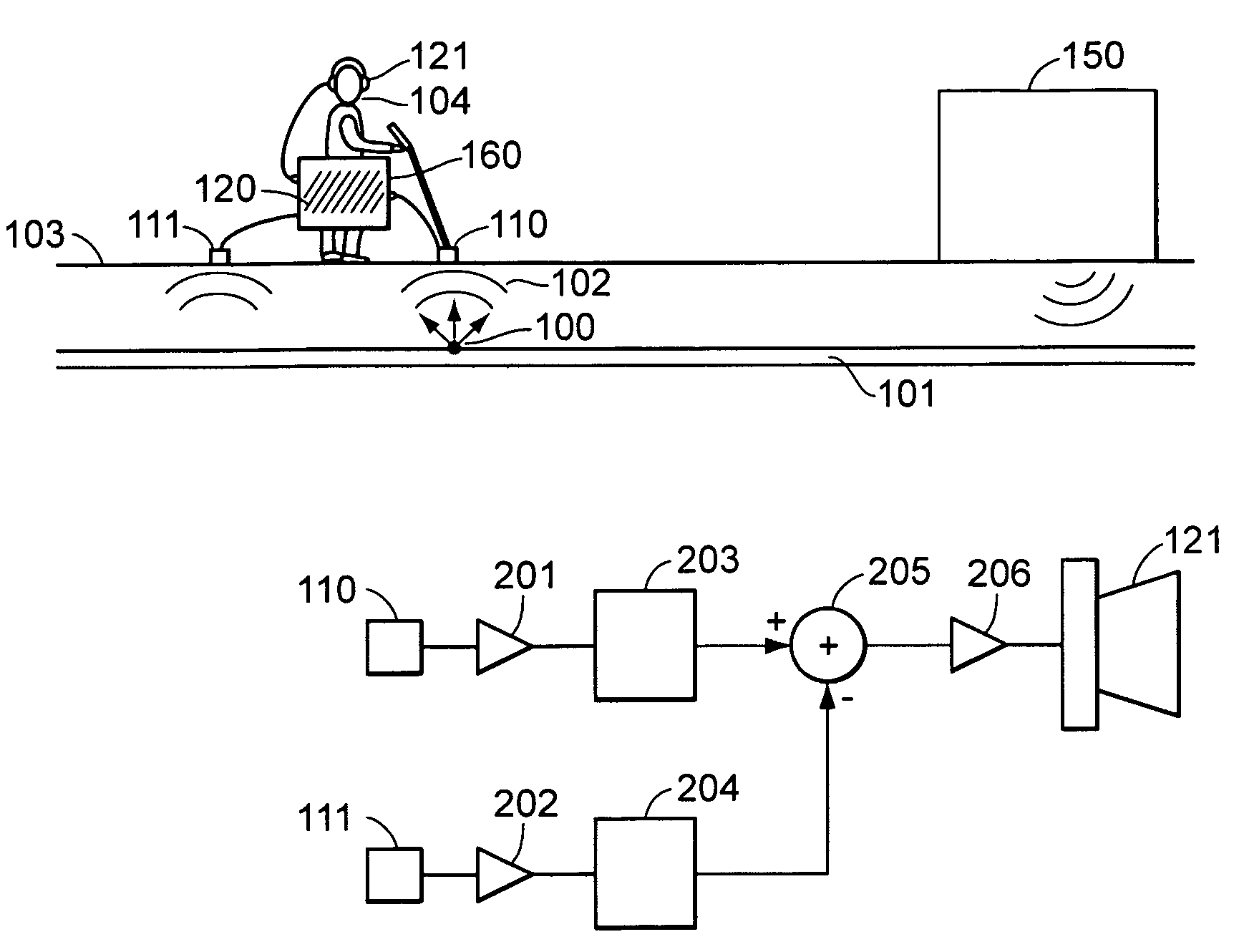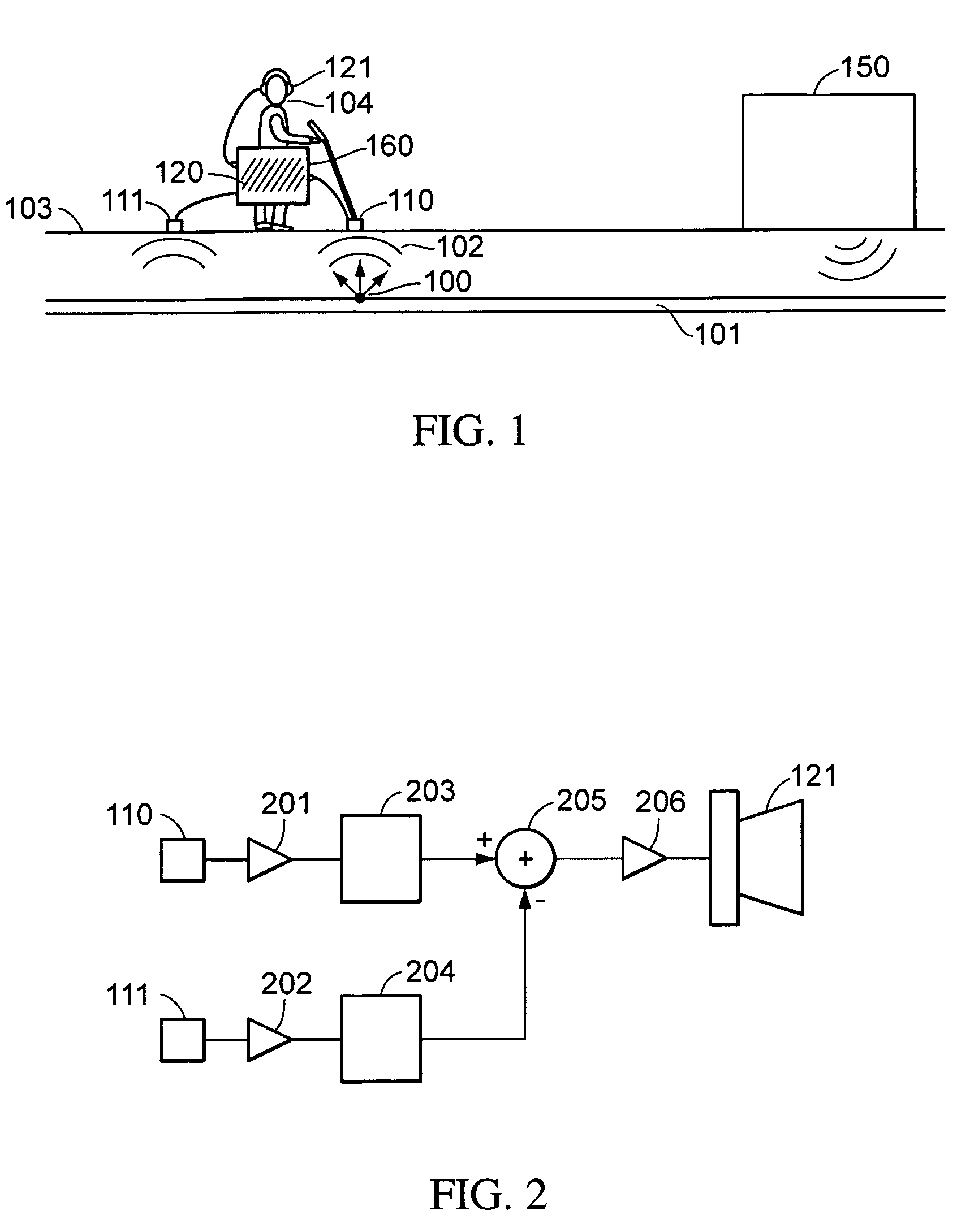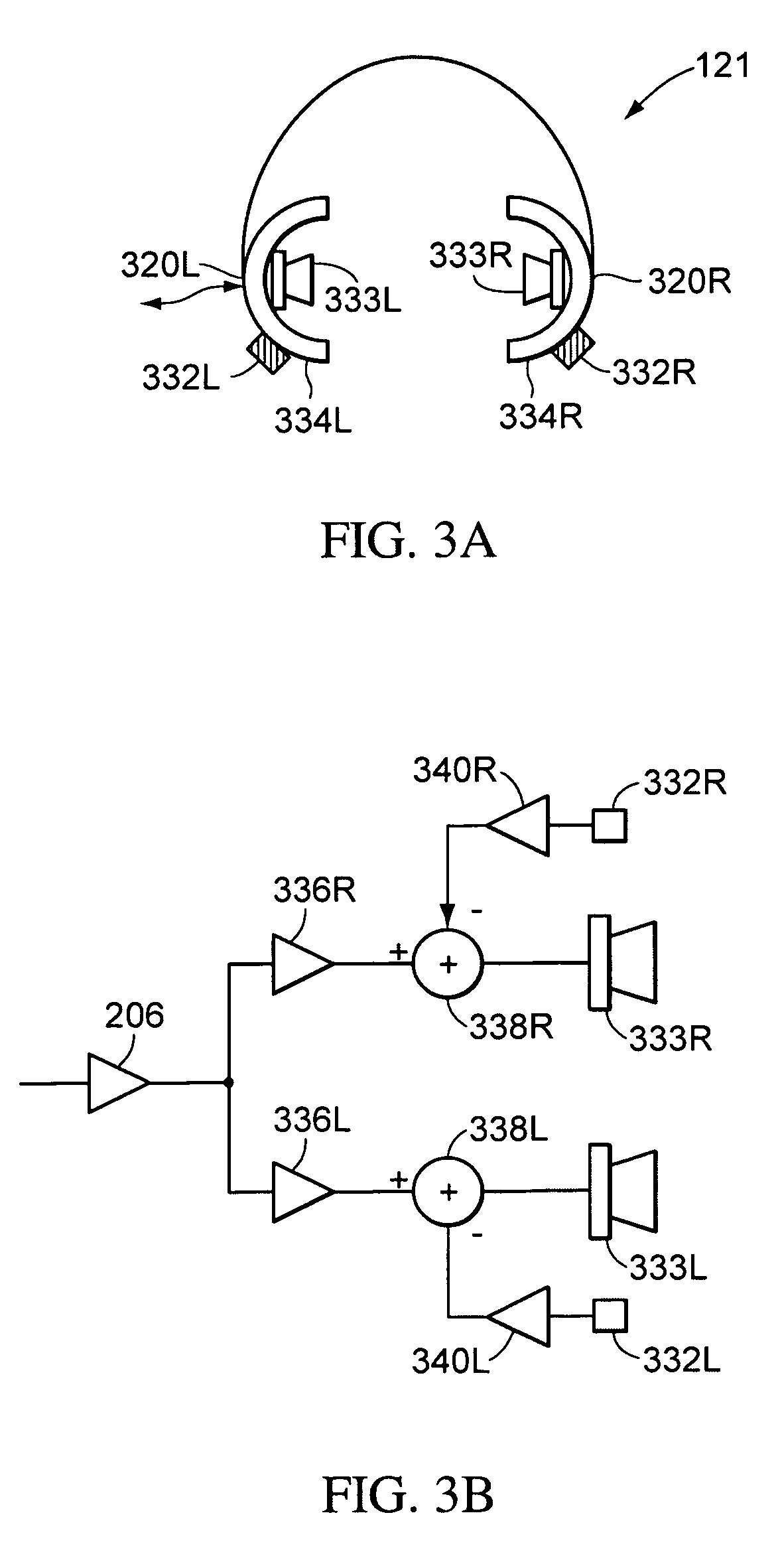Acoustic detector with noise cancellation
a technology of acoustic detector and noise cancellation, which is applied in the field of acoustic detector, can solve the problems of insufficient attenuation of ambient noise protection headphones, inability to allow operators to hear noise, and inability to achieve a wide range of noise reduction, so as to reduce the acoustic noise heard, improve the sound quality of ambient noise signals, and be easily discernible
- Summary
- Abstract
- Description
- Claims
- Application Information
AI Technical Summary
Benefits of technology
Problems solved by technology
Method used
Image
Examples
Embodiment Construction
[0028]FIG. 1 shows a schematic diagram of an acoustic detection system, according to an embodiment of the invention. An acoustic detection system 160 of FIG. 1 shows a system for detecting the position of a leak 100 in an underground pipe 101. in some embodiments, acoustic detection systems according to the invention may be used for other purposes, such as, for example, to detect the position of a buried pipe where mechanical vibrations applied to an exposed portion of pipe may be detected above an underground portion.
[0029]A leak 100 in a pipe 101 emits leak sounds 102. The frequency of leak sounds 102 generally lies in a frequency range between υmin of approximately 40 Hz and υmax of approximately 4000 Hz, although specific leaks in specific pipes (e.g., water leaks in water lines) may emit leak sounds in much more narrow frequency ranges. The frequency range of acoustic waves produced by other systems may lie in a different frequency range with a different υmin and υmax.
[0030]An ...
PUM
 Login to View More
Login to View More Abstract
Description
Claims
Application Information
 Login to View More
Login to View More - R&D
- Intellectual Property
- Life Sciences
- Materials
- Tech Scout
- Unparalleled Data Quality
- Higher Quality Content
- 60% Fewer Hallucinations
Browse by: Latest US Patents, China's latest patents, Technical Efficacy Thesaurus, Application Domain, Technology Topic, Popular Technical Reports.
© 2025 PatSnap. All rights reserved.Legal|Privacy policy|Modern Slavery Act Transparency Statement|Sitemap|About US| Contact US: help@patsnap.com



